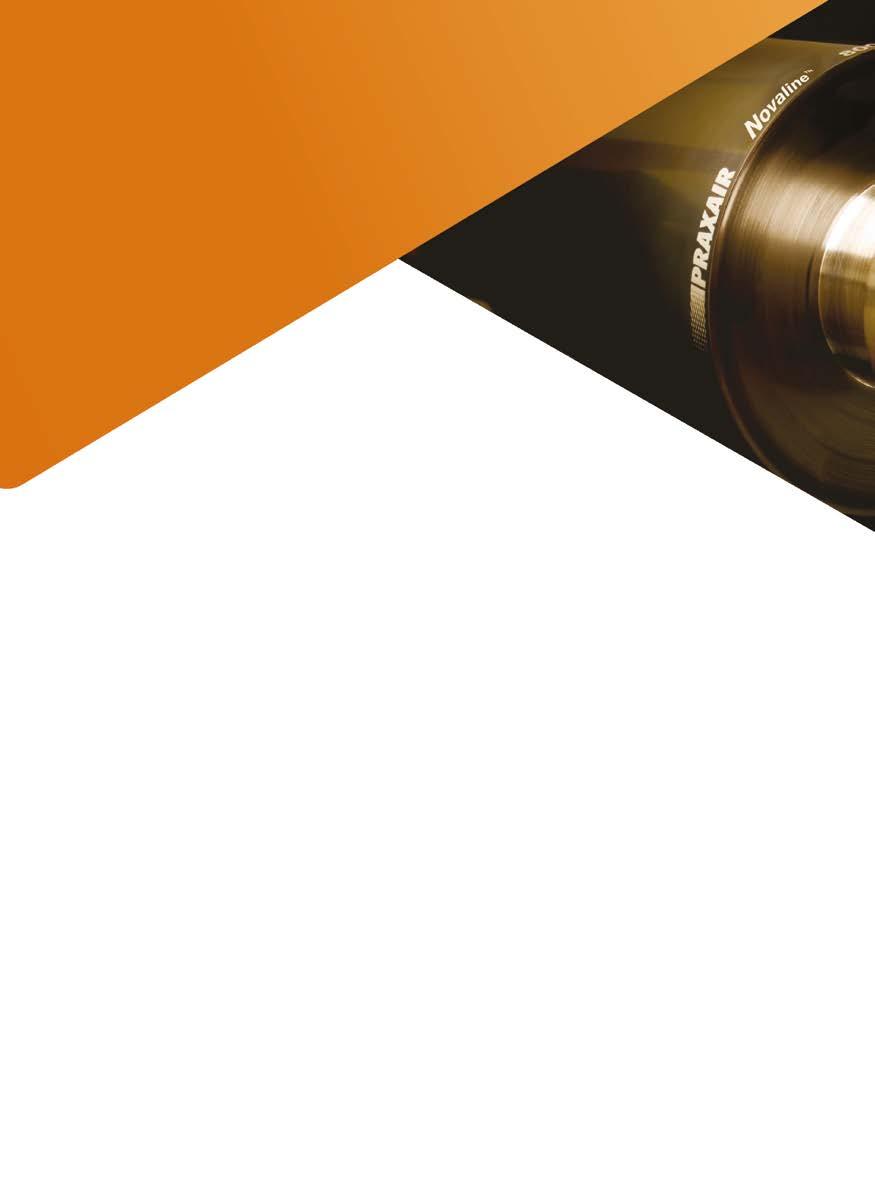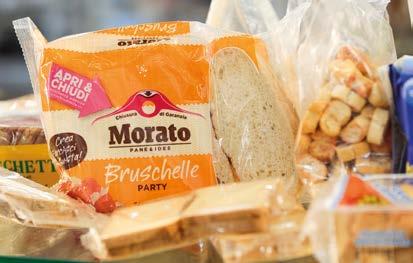
4 minute read
ARTGOLD LASER ENGRAVINGS FOR ANILOX ROLLS
Digital precision engravings for demanding varnish applications
Discover the innovative anilox roll technology from Praxair Surface Technologies (PST), a Linde company. As pioneers in the industry, we introduced the first laser-engraved ceramic roll in 1979. For more than 25 years, printers and converters worldwide have trusted us to provide top quality anilox rolls and coatings that deliver longer service life, reduced downtime, and increased productivity. Join forces with us and experience the difference firsthand.
Advertisement
At PST, laser engraving is the final step in the preparation of our NOVALINE™ anilox rolls. Our highly precise and quality-controlled engraving process ensures that each characteristic of the roll meets your specifications, providing a smooth and consistent ink release.
Introducing ARTGOLD - an innovative laser engraved technique applied to anilox rolls that revolutionizes flexographic printing. With ARTGOLD, printers can achieve a smooth application of opaque white on flexographic film, eliminating the biggest challenges faced in flexographic printing.
Our process applies a perfect smooth layer of white ink onto film, achieving the desired opacity level in one run, without pinholing. This saves printers the cost of 2 runs to lay down a consistent white layer.
• Our ARTGOLD anilox rolls are much easier to clean, saving printers time and hassle during press maintenance.
• ARTGOLD delivers completely pinholing-free solid prints, ensuring a flawless final product.
• ARTGOLD improves printing surface smoothness, delivering smoother, more uniform prints.

• Even with a high lines per inch (LPI), ARTGOLD enables printers to achieve high printing densities, providing unmatched versatility and performance.
Although both samples register the same opacity reading of 52 percent, the sample on the left exhibits a noticeably smoother laydown, devoid of the pinholing and graininess that are present in the sample on the right.
realizzato in plastica monomateriale, per esempio, è molto più semplice da gestire nella raccolta differenziata rispetto ai composti multistrato.
Anche gli imballaggi realizzati a partire da fonti rinnovabili sono sempre più richiesti. Uno dei materiali principali è la carta, mentre le bioplastiche si affermano come alternativa ai classici imballaggi in plastica. Design for Recycling - Il design concepito per gli imballaggi è un fattore determinante nel processo di riciclo, soprattutto per quanto riguarda quelli in plastica.
Tuttavia, modificare e aggiornare il design del packaging non basta per rendere sostenibile un prodotto. In tutti quei Paesi che non hanno impianti di riciclo adeguati o un sistema di raccolta, sarà necessario sviluppare, o costruire, le infrastrutture necessarie o creare products, increasing productivity and at the same time reducing costs and producing sustainably - the field of tension is complex. Success and future viability essentially depend on mastering all these challenges, being creative and efficient. These challenges can be solved through technology and digitization. And technology providers have a key role to play here: with secure, efficient and future-proof solutions.

Circular Economy And Resource Management
Circular economy and resource management are top issues in the global food and packaging industry. The aim of the Circular Economy is not to dispose of the various materials as waste at the end of their useful or service life, but to reuse them as high-quality materials through intelligent processes. This saves energy and conserves resources as well as the environment. Sustainable solutions and materials are in demand for packaging.
One aspect of packaging: using less packa- ging material. Reduced wall thicknesses, lower film thicknesses, optimized shaping as well as processing techniques mean that packaging is becoming lighter and lighter, with the same or better packaging performance and stability. Another key component of the Circular Economy is packaging that is easy to recycle. Plastic packaging made from monomaterials instead of multilayer composites can be easily sorted and returned to the cycle. Packaging made from renewable raw materials is also increasingly in demand.
One of the trend materials is paper. Bio-based plastics are seen as an alternative to classic plastic packaging.

Design for Recycling - packaging design geared towards recycling is an important factor in increasing the recycling rate, especially of plastic packaging. However, changing packaging design is only one part in terms of sustainability. Particularly in countries with inadequate or no collection and recycling structures, a corresponding infrastructure must be expanded or built up and an in- incentivi per la popolazione. Al giorno d’oggi le aziende affrontano una sfida complessa: incrementare l’efficienza produttiva mantenendo una condotta sostenibile e responsabile e facendo un uso oculato delle scarse risorse disponibili. La parola chiave, in questo contesto, è gestione delle risorse. La produzione e lavorazione dei prodotti alimentari prevede processi ad alto consumo energetico e idrico, sia per la lavorazione che per la successiva pulizia. C’è un forte bisogno di processi innovativi in grado di ridurre il consumo di queste risorse. Tra le soluzioni più diffuse per risparmiare elettricità e altre risorse operative e aumentare l’efficienza energetica ci sono le tecnologie di controllo intelligente e automazione, motori in grado di risparmiare energia, compressori, ventilatori e pompe. L’ottimizzazione dei processi e l’introduzione di modifiche nel design del prodotto, tuttavia, rappresentano una soluzione in grado di agire sull’intero processo. centive for recycling created. Companies today are faced with the challenge of acting sustainably and responsibly, making optimum use of scarce resources, and at the same time increasing efficiency in production - the keyword here is resource management. The production and processing of food is very energy-intensive and requires water - both for the process itself and for cleaning. Innovative processes that save energy and reduce water consumption are needed here. Intelligent control and automation technology, energy-efficient drives, compressors, fans or pumps are among the classic solutions for saving electricity and operating resources and increasing energy efficiency. More promising, however, are optimized processes and design changes that affect the process as a whole.
L’ingegneria meccanica è in grado di elaborare diverse strategie per aiutarci a usare e risparmiare energia, acqua e materie prime in modo efficiente, rendendo sostenibili le attività di lavorazione e imballaggio. I sistemi a ciclo chiuso, per esempio, eliminano quasi del tutto le emissioni e cicli produttivi ottimizzati ci permettono di evitare lo spreco di materie prime e risorse.
Mechanical engineering offers numerous solutions that help to use or save energy, water and raw materials efficiently - for sustainable production and packaging.










